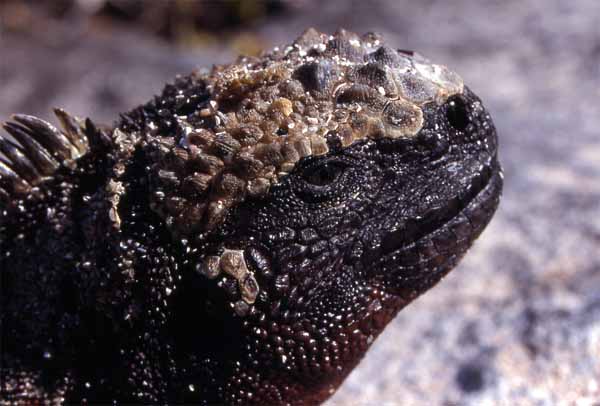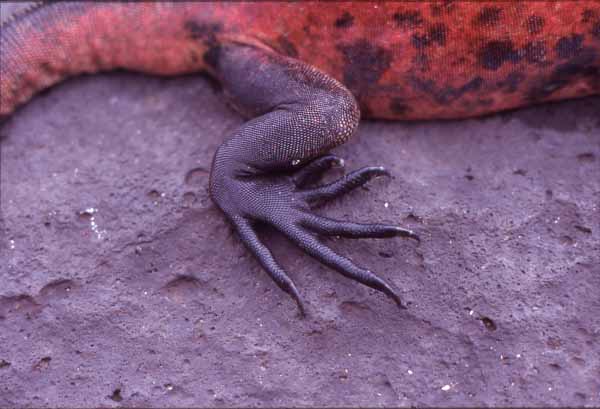MARINE IGUANA 2: ADAPTATIONS
As the only seagoing lizard, the marine iguana (Amblyrynchus cristatus) has numerous unique adaptations. Comparing the marine iguana with its terrestrial cousin the land iguana provides the obvious differences. The tail is vertically flattened and very long to provide the propulsion, whereas the head is rounded to reduce drag while swimming and assist feeding on low-growing algae. Likewise the leg and claws are small to help streamlining but powerful to grab onto rocks in the pounding surf. The iguana is adapted to spending time underwater. Darwin left one submerged in a bucket of seawater, and after an hour the animal emerged unharmed. |
Click below to see the photos and information on marine iguanas:
iguana head
iguana leg and claws
IGUANA HEAD
Click image to return to gallery
Up close, we can see the bumps on the marine iguana's head. These are used by males in head-butting contests during breeding season. The white deposits are salt that the iguana ejects from its nostrils to rid itself of excess salt acquired in its diet. The blunt mouth helps it crop its close-growing seaweed food. This photo was taken on Hood Island, where the most brightly colored males occur (see photo below). |
IGUANA LEG AND CLAWS
Click image to return to gallery
The marine iguana's powerful claws are adapted to gripping lava rock, so that even in the strongest surf, they are not washed away. As Charles Darwin wrote, "Their limbs and claws are admirably adapted..." (Voyage of the Beagle 1845). When feeding underwater the claws grip the slippery algae covered rocks while the iguana gnaws at the seaweed. When it's walking on land, the claws are so long, they sometimes get caught in the little holes of the lava rock, so the iguana has to tug a few times to free itself. This photo was taken near The Blowhole on Hood Island. Note the bright red splotches on the torso—typical of breeding males on Hood. |
Learn about marine iguana natural history
next photos
|
|---|



